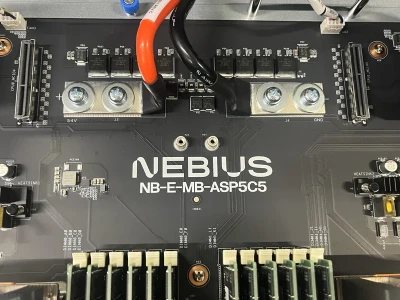Alright, let's get into this. Google wants to put datacenters in space. Project Suncatcher, they're calling it. The idea? Constellations of solar-powered satellites, buzzing around 400 miles above us, crunching AI numbers. Initial equipment goes up in early 2027.
Orbiting Ambition: Beyond the Hype
The pitch is compelling: cheaper launches, better solar power (up to eight times more productive than terrestrial panels, they say), and less strain on Earth's resources. Google projects space-based datacenter running costs could be comparable to earthbound ones by the mid-2030s. They're projecting major technology companies will spend $3 trillion on earthbound datacenters. That's a lot of office space.
But let's dissect that $3 trillion figure. It's a projection, not a current reality. And projections, as we all know, can be... optimistic. How much of that $3 trillion is already committed? What are the assumptions about energy costs, land prices, and cooling technology improvements here on Earth? These are questions Google's announcement doesn't explicitly address.
Elon Musk, never one to be left out of a space race, is also reportedly scaling up space-based datacenter plans through Starlink and SpaceX. Nvidia AI chips are headed to space later this month, too, courtesy of a startup called Starcloud. The narrative is building: space as the next frontier for computation.
Here's the crux of it: "In space, you get almost unlimited, low-cost renewable energy," claims Philip Johnston, co-founder of Starcloud. He also claims ten times carbon dioxide savings over the life of the datacenter. That sounds great, but let's think about the math. Launching rockets emits hundreds of tonnes of CO2. So, how many launches are we talking about to build these constellations? What's the lifecycle analysis here? The carbon math needs to be transparent, and I'm not seeing it yet.
And this is the part of the report that I find genuinely puzzling. Google acknowledges "significant engineering challenges remain, such as thermal management, high-bandwidth ground communications and on-orbit system reliability.” Those aren't minor hurdles; they're potential project-killers. Thermal management alone, in the vacuum of space, with tightly packed processors, is a nightmare scenario. High-bandwidth communication via optical links is also far from a solved problem.

The Satellite Swarm: An Astronomer's Nightmare?
Beyond the technical challenges, there's the growing concern about "satellite pollution." Astronomers are already complaining about the increasing number of satellites interfering with observations. Project Suncatcher envisions "compact constellations" of around 80 satellites. Eighty. How many of these constellations are they planning? What's the cumulative impact on astronomical research? I haven't seen a thorough environmental impact assessment, and that's a red flag.
The Ariane 6 rocket recently launched the Sentinel-1D Earth-observation satellite. Sentinel-1D will replace Sentinel-1A, which has been eyeing Earth from orbit for 11 years. This is all part of the European Union's Copernicus Earth-observation program. That's great, but it also highlights the lifespan issue. Satellites degrade. They need replacing. What's the plan for deorbiting these AI datacenters when they reach end-of-life? Are we creating a space junk problem to solve our AI processing needs?
ULA (United Launch Alliance) is preparing to launch an Atlas 5 rocket carrying a communications satellite for Viasat. This will be the 105th Atlas V rocket launched to date. After this mission, ULA will have 11 of these rockets remaining before it is officially retired. Space is getting crowded, and launches are becoming routine. But that doesn't mean they're cheap or environmentally benign.
Viasat officials said their new satellite will provide Ka-band network capabilities, adding more than 1 terabits per second (Tbps) of capacity to the company’s network over the Americas. Following months of on-orbit testing at its operating location of 79 degrees West longitude, the ViaSat-3 F2 spacecraft is expected to enter service in early 2026. All of this shows the amount of hardware being launched into my space.
A High-Risk, Potentially High-Reward Moonshot
So, what's the verdict? Google's Project Suncatcher is a high-risk, potentially high-reward moonshot. The promise of cheaper, greener AI processing is enticing. But the devil is in the details (or rather, the lack thereof). The engineering challenges are significant, the environmental impact is uncertain, and the economic model relies on optimistic projections. According to reports, Google plans to put datacentres in space to meet demand for AI to meet the growing demand.
The question isn't whether it's possible to put datacenters in space. The question is whether it's responsible and economically viable to do so at scale. And right now, the data just isn't there to support a definitive answer.


